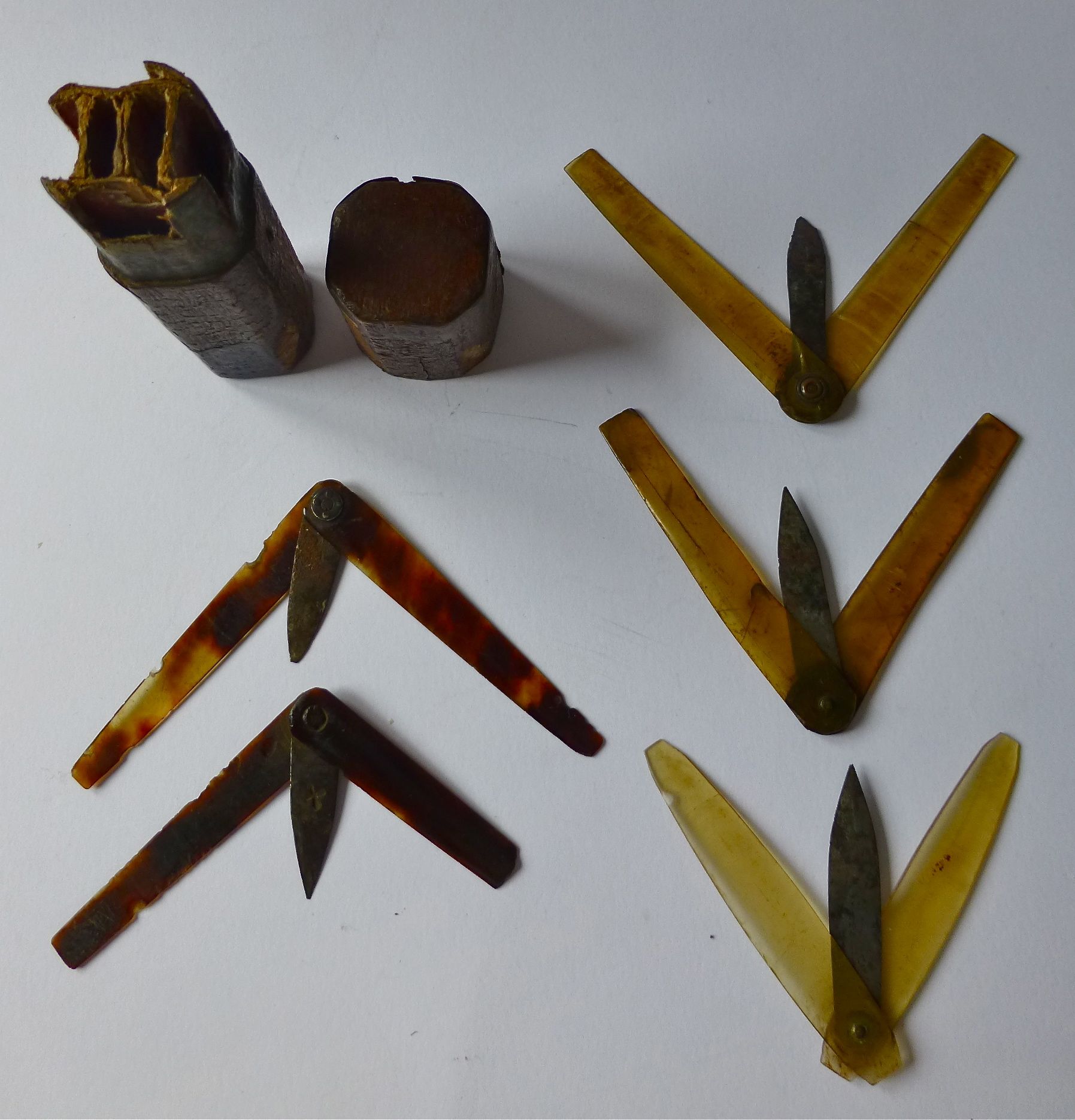 |
| Lancets, about 1740 . |
About the lancets
First lancets are documented around the 15th century (C.Keith Wilbur, Antique medical instruments, 2003 p.116).
Lancets consisted of a front pointed, double-sided symetrically polished knife which was hidden between 2 protective leaves. These leaves were mainly tortoiseshell or horn, but could also be made of precious mother of pearl. The shape and size of the lancets seem to have changed little over time.
About the cases
Often, the lancets were packed into several in a box (fr chasse) of cardboard, leather or (chased) silver metal, which was provided with a hinged or hinged lid hinged (French lacet (t) ier).
Why are cases made of wood, cardboard and leather often so badly affected? The explanation is surprisingly simple: the patient held it in his hand, as a substitute for the often absent bloodletting rod - in the right, when blood was taken from him in the true elbow and vice versa:
"Pour faciliter la sortie (du sang), on donne à tenir le lancettier au malade, afin qu'en le tournant dans sa main, le sang passe plus vite, par le mouvement des muscles, des veines intérieures dans les extrémités" (Sue le jeune, Dictionnaire portatif de chirurgie, ou Tome IIIe du Dictionnaire de santé, Paris 1771, p. 669). This application of the box he had taken textually by François Moysan "On recommand mal mal de de tourner the lancettier dans sa main, afin que le mouvement of the muscles fasse passer plus vite le sang des veines internes dans les externes" (Dictionnaire de chirurgie contenant la description anatomique des parties du corps humain, Paris 1767, p.456).
About the manufacturer
The instruments of the surgeons were fabricated by the bank of knife manufacturers - the most famous ateliers were in Paris and in Langres. The charm of this ensemble lies in the signature of one of the knives: a shamrock. Thus the manufacturer is certain: Pierre, son of Guillaume VIGNERON. (La Coutellerie depuis l'origine jusqu'Ã nos jours, 1896). "Les manuscrits de Delamarre donnent la liste des maîtres couteliers (87) établis à Paris en 1680". Among them we find the father of "our" Pierre VIGNERON, rue de la Coutellerie, au Trèfle, whose shop was located on the Pont Saint-Michel. The father was married to Cathérine Trifain. "Guillaume Vigneron, coutelier installé rue de la Coutellerie à Paris, à l'enseigne de l'as de trèfle, Il marquit ses outils d'un trèfle".
One of VIGNERON's most famous products is the "Exfoliatif dit d'Ambroise Paré" or "élévatoire tripode" dated 1748 in the collection of the Musée Descartes in Paris.
Origin: Talence near Bordeaux, 2015
|